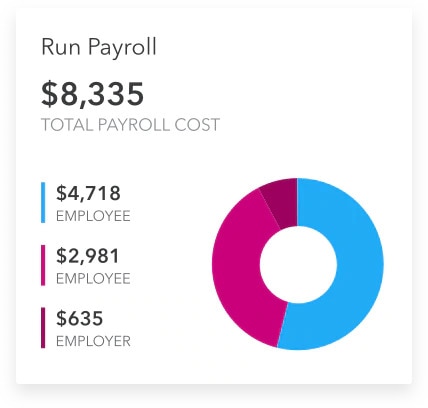Changes in consumer demands are constant, so the key to long-term success is ensuring your business sees continuous growth. By generating organic growth, you will be able to stay current with fluctuations in the market, keep up with competitors, and increase your cash flow.

How to Create Organic Growth for Your Business
What is Organic Growth?
Organic growth is achieved when a business increases revenue by expanding internal operations. This means that a company will use its resources to attain growth, which can be done by:
- Using new technologies
- Increasing output
- Implementing more efficient processes
- Training or hiring staff
- Introducing new products or services
- Expanding to new markets
- Opening new locations
Essentially, an organic growth strategy will aim to develop a business from within itself, allowing the business owner to stay in control of the company. Managers need to use physical and intangible assets to increase revenue and net profits to increase shareholder value.
Regarding physical assets, organic growth means managers use the equipment more efficiently to grow profits.
Intangible assets that help a company achieve organic growth consist of the collective skills and knowledge of the company's management and employees. These skills create new products or devise new operating procedures to increase revenue and net profits.
Organic business growth examples
Apple is an excellent example of how a company can grow organically through innovation, research and development of new products. According to Business Insider, Apple spent $4.6 billion on research and development over the past four years, while revenues soared from $25 billion to $43 billion.
After almost going under in the late 1990s, Apple needed to rely on its innovation to help them shift to its new identity. These days Apple is known for their innovative products.
Coca-Cola is another example of organic growth. The company first started in 1886, and until 1948, it captured approximately 60% of the market share, and by 1984, this share reduced to 21% when it started to face strong competition. The company completed its first acquisition by securing Minute Maid in 1960. This allowed them to grow organically between 1886 to 1960, which is a growth period of 74 years.
However, in recent years, the company has seen organic growth due to the success of Coca-Cola Zero Sugar and new flavours for the Diet Coke lineup.
Finally, McDonald's has implemented multiple organic growth strategies over the years. For example, they used new technology to widen their customer base by applying delivery apps to their operations, thus targeting the delivery market.
Organic Growth vs. Inorganic Growth
Inorganic growth is the direct opposite of organic growth. Organic growth is when a business grows internally, and inorganic growth is when a company uses external methods to expand operations.
Inorganic growth can materialize through mergers and acquisitions. These are methods by which a business owner sources outside help to grow their business in revenue and operations.
- Mergers: A merger is when two or more businesses join together to form a single new entity.
- Acquisition: An acquisition is when one business purchases a part of or all of another company to gain control of its assets.
Inorganic growth takes less time and could be less expensive than organic growth. This is because, with organic growth, much money must be spent on research and development. Business management also needs to have the skills in place to create something truly innovative.
Whereas with inorganic growth, a business will see an immediate increase in revenue once the merger or acquisition has been completed. This is due to the sales of both companies now being combined.
Secondly, businesses can take advantage of economies of scale, lowering costs. A business's size is related to whether it can achieve an economy of scale. Larger companies can produce more and spread the cost of production over a more significant amount of goods. Which in turn reduces the unit cost of those goods.
Another advantage of inorganic growth is that it reduces the amount of competition, therefore improving market share.
However, a disadvantage of attempting inorganic growth is that regulators can block mergers and acquisitions that would not be in the public interest regarding competition, choice, and price. Another disadvantage is that there is usually a considerable upfront cost tied to mergers and acquisitions, with no guarantee of success.
3 Stages of Organic Growth in Business
The three stages of organic growth initiatives include business optimization, investing, and creation. Businesses may choose one or all three options to meet their growth goals.
1. Business optimization
Operations are the back end of your business, comprising thousands of different processes. By optimizing your business operations, you will be able to simplify your workflow, reduce redundancies, predict changes and cultivate communication. Additionally, you will enjoy benefits such as reducing risk, optimizing your resources, stability, quality control and end-to-end visibility in your process.
The first step in approaching business optimization is to take note of systems that feel clunky and not quite streamlined. You will want to focus on three key areas to optimize your business: sales, fulfillment, and people.
Sales optimization
Evaluate your pricing and packaging. Create an internal document that outlines your packages, what is included in them, what the deliverables are, and what the prices are. This document should be as detailed as possible, including cost and markup pricing, so you can see where your profitability lies.
Take a look at your customer onboarding process, and note how long it takes for your customer to sign the contract and make their first payment. How many emails did you send in between during this process? Consider using automated systems if you notice this process taking longer than you would like.
Fulfillment optimization
This will be the glue for retention, renewals, and referrals. Take a look at your customer success strategy, are your customers receiving their desired outcomes while using your products or services? Your goal should be that customers get what they are looking for as quickly as possible.
Good communication is a pillar for optimized fulfillment. If customers feel they have difficulty reaching you with any troubles they may be experiencing, this will soil your chances for retention. The best way to streamline communication is by using a centralized meeting space, like a project management tool or a help desk app like Fresh Desk or Help Scout. These apps use a shared inbox, like support@yourdomain
Another way to ensure you are optimizing fulfillment is to ensure you are being proactive instead of reactive. This could look like sending a follow-up email with simple steps to guide your customer through any process, also giving them contact information they can reach you at with any questions.
People
To keep scaling successfully, you will need support around you. Otherwise, you will take on too much responsibility. An area where you could focus on optimizing is your hiring process. You can have a checklist for the skills required for the position you are hiring for.
Other questions to ask yourself are:
- What is your application process?
- Where does it take them once the application is made?
- Where does the information get funnelled through to your back end?
It will become streamlined when you have clarity on this process and what it looks like.
Before the hiring process, make sure you document each role. That way, everyone at your company will know what their expectations are and what their success will look like. This will also make it easier for you to manage salaries and raises within your company.
2. Investing
Investing in activities by reallocating funds from various sources will help fuel organic growth.
One way to do this is by investing in your current business operations and making slight improvements – as mentioned in the section above.
You may also choose to invest in new marketing and advertising strategies. An example of this could be a local SEO marketing strategy or more traditional advertising methods. Depending on the goal you have for your advertisements, you can either:
- Encourage existing customers to become repeat customers
- Expand into new markets by gearing the advertising methods to attract new demographics.
Investing in new technology is another way to grow your business organically. This could mean making your apps and website more user-friendly with UX/UI design. Or using e-commerce so that people who do not live near store locations have the option of purchasing your product.
3. Creating
Growing organically also includes creating new products, services, and business models or opening recent locations.
Creating something new should always be backed up by research and development. If you are putting forth a new product or service, look into how it will meet your target market's needs in a way that your current product or service doesn't. Or how it can potentially grab the attention of a new market.
When creating new products, the best practice is to start slow. Rather than releasing many new items all at once, start with one or two. This will allow you to save on costs and gauge how customers react to the new product. You may even decide to create sample products and give them to select customers to see if you should move forward or if there are any changes you should make.
It is essential to ensure that your new product does not compete with any products you currently sell. Having products complementing each other can give you a competitive edge in the market.
When opening new locations, be sure to do your research on where you want the new location to be and why. It is easy to choose the hottest location downtown with the most traffic, but this could be financially draining in the long run.
If you don't want to incur the costs of opening up a new location on your own, franchising your business is another option on the table for substantial organic growth.
Tips for Increasing Organic Growth
A tip for increasing organic growth is staying within your defined niche. This will allow you to differentiate yourself from the competition and give your customers a unique reason to choose your business. People want to feel like something was specially made to fit their lifestyle needs, so staying within your niche will be crucial to that experience.
Here are some other tips to keep in mind.
Get to know your customers
When you started your business, you may have researched your target market, but it shouldn't stop there. People's lives are constantly changing, and so do their needs; what someone wanted three years ago will look different than what it does today.
To stay competitive, use resources such as social media to keep up with current trends that appeal to your customer.
Staying on top of customer lifetime value is another method you can use to increase your ability to grow organically. Customer lifetime value is the customer's worth to a business over the whole relationship period. It is an important metric because it costs less to keep existing customers than to acquire new ones.
Do your research on expanding into new markets
It would help if you were comfortable with risk and learn as much as possible about the new market you're interested in. Take the time to learn about the culture and connect with the right people on the ground who can help support your expansion efforts as you grow. It also enables you to avoid costly mistakes that may harm your reputation with new and existing customers.
Should your business look to export products, you must consider how to streamline the logistics associated with this task. First, develop a strategy that identifies packaging, shipping, and customs and border regulations. If you are exporting services, you will need to address such factors as credential validations, work permits and visa requirements, language, travel plans, and expenses from the new region of expansion.
You will also need to consider tax compliances in the foreign markets and how your business will deal with these. Situations surrounding distribution logistics and the marketing and selling operations could trigger tax implications. Therefore, read up on the new market's tax regulations to ensure proper compliance.
Identify and track KPIs for the business
A business can not grow if it does not have objectives to target, which is why tracking KPIs is crucial to your success.
The first step is to establish what your overall goals are. Then set key performance indicators based on what needs to happen to make those goals happen. KPIs will help you select what actionable steps you need to take – and measure how many more steps you need to take – to reach the final goal.
As you drive organic growth, you will need the right tools to help you track your finances and KPIs and scale reasonably. With QuickBooks Online, you can access a comprehensive set of features to manage your business's books to stimulate revenue growth for the future.


